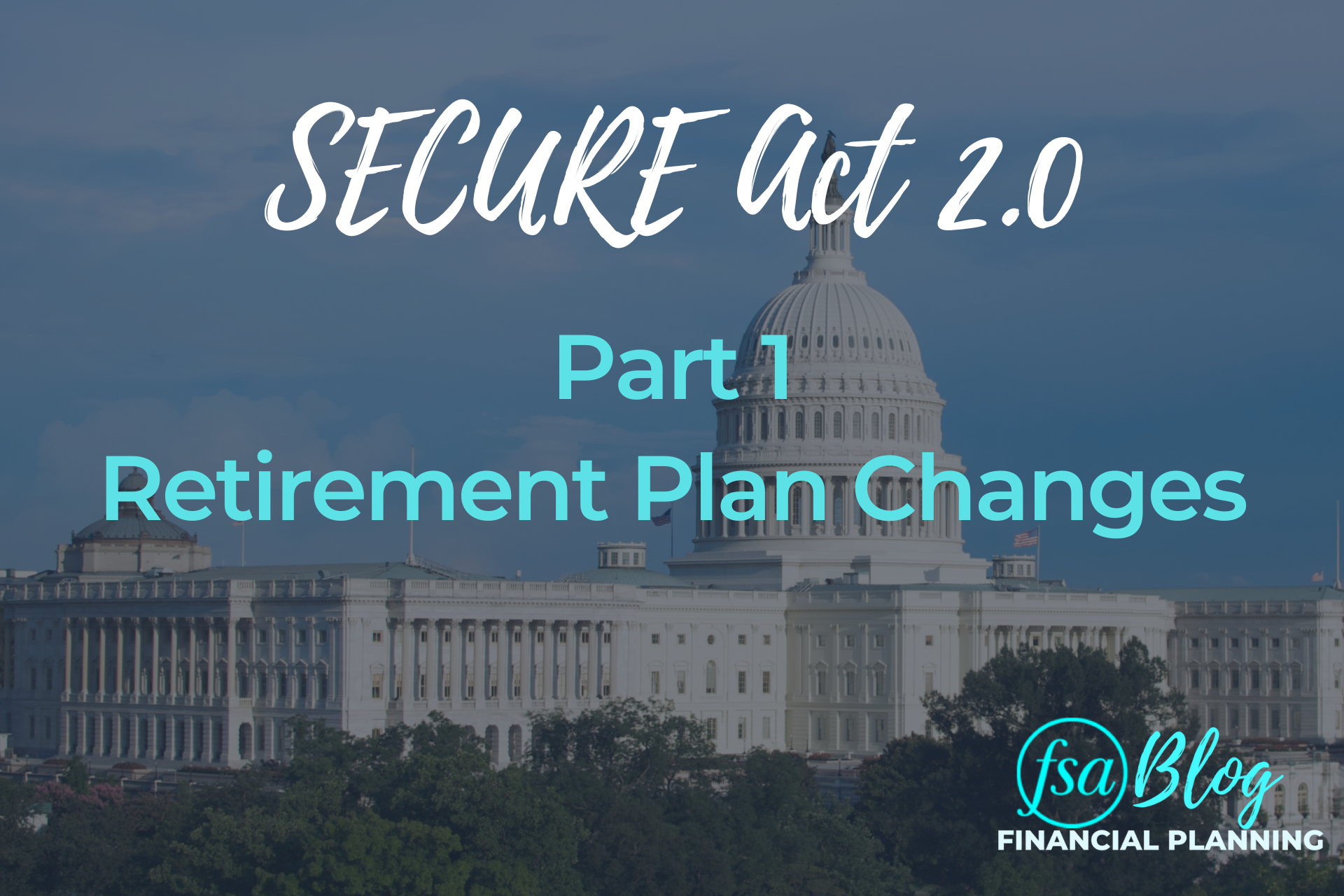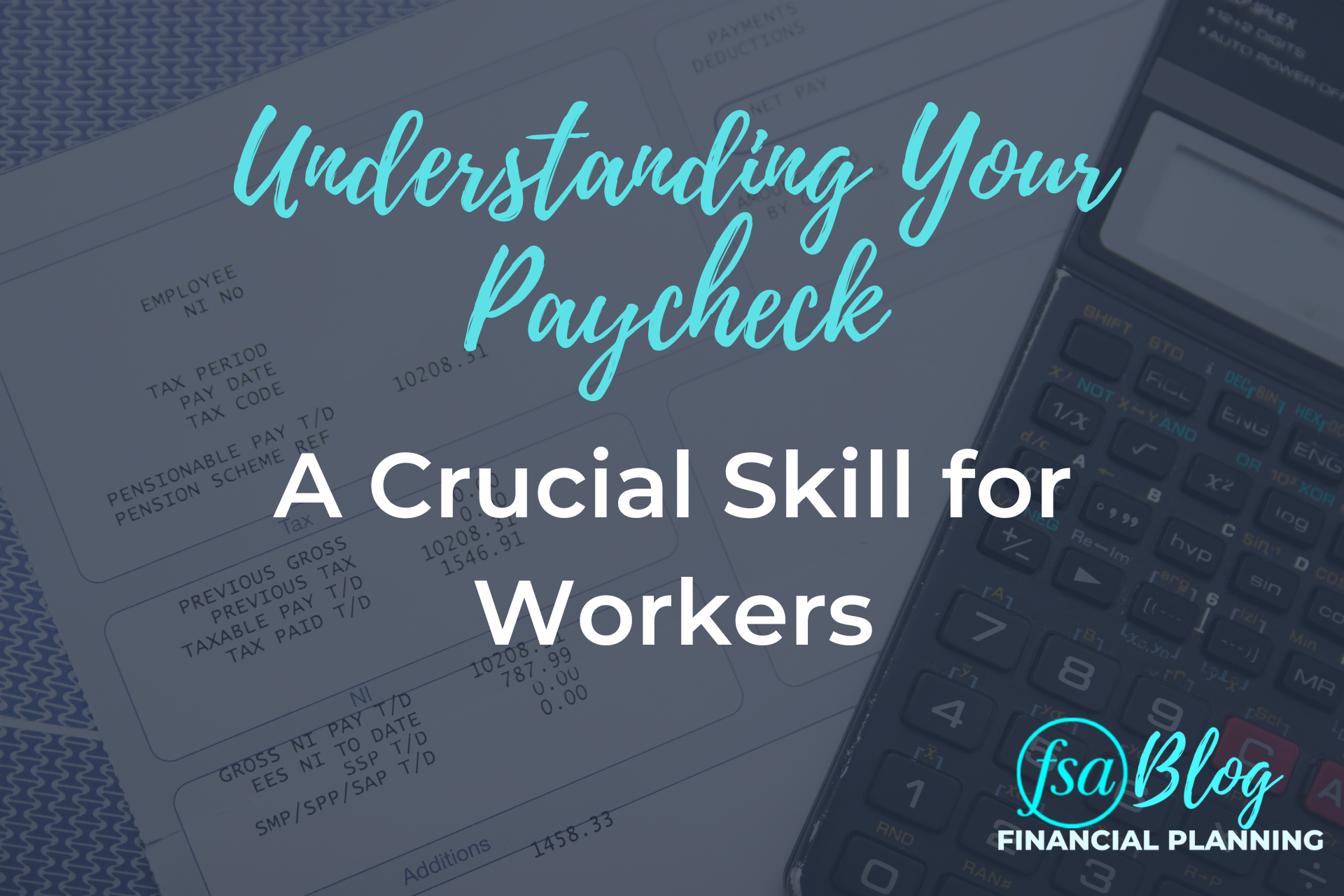Congress got busy right as 2022 came to a close with passing the SECURE Act 2.0. The SECURE Act 2.0 is a follow up to the original SECURE Act that passed in 2020. For a quick refresher, the original SECURE Act changed the required minimum distribution (RMD) age from 70.5 to 72 and created the death of the stretch inherited IRA and replaced it with the 10-year rule. You can click here for a thorough walk through of the 2020 Act.
To set the scene, the original SECURE Act had 12 changes, whereas the SECURE Act 2.0 has over 100 changes! Yeah, that’s a lot of legislation. We’ve combed through the new act to give you the highlights of things that might impact you. In this part 1 blog post, we’ll focus on retirement plan changes. As a bonus, we’ve included the updated retirement account annual contributions at the end. Grab a cup of coffee and let’s get started!
RMDs Get Pushed Back…Again
If not for the SECURE Act 2.0, then first time RMDers this year would be 72. Beginning this year, the starting age is pushed back to 73 for those turning 73 between 2023 and 2032. That means there are no new RMDers this year! To make it more complicated, Congress pushed the starting age back to 75 for those turning 73 in 2033 and future years.
Said another way, if you were born before 1951, you are already taking your RMD. If you were born between 1951-1959, then your RMD beginning age is 73. Lastly, those born in 1960 and on have an RMD beginning age of 75.
Another change regarding RMDs comes in relief for RMD mistakes. In the past, if you forgot to take your RMD on time, you would have owed the IRS a penalty of 50% on the required distribution amount. That’s a hefty toll! Even Congress thinks so, because (effective 2023) the penalty is reduced to 25% and is further reduced to 10% if you fix the mistake within the “correction window.” Congress has not clarified the timeframe of the correction window, so stay tuned.
New Option for Spousal Inherited IRAs
Shifting over to inherited IRAs, there is a new post-death option for surviving spouse beneficiaries. Starting in 2024, you have the additional option to be treated as the decedent for RMD purposes, as opposed to lumping the decedent’s IRA into your own investments and utilizing your lifetime factor to calculate RMDs. The only case where this makes sense is when the deceased spouse was younger than the surviving spouse and you want to delay your RMDs. Please ensure you take your time making this decision because, as of now, the decision is irrevocable.
New Retirement Plan Contribution Limits
With inflation being hot, retirement plan contributions receive an increase. Now technically, this is not part of the SECURE Act 2.0, but we thought it would be useful information to share. Below are the updated retirement plan contribution limits:
- 401ks, 403bs, 457s, and SARSEPs – $22,500 with a $7,500 catch-up provision if over 50.
- Simple Retirement Plan – $15,500 with a $3,500 catch-up provision if over 50.
- Traditional and Roth IRAs – $6,500 with a $1,000 catch-up provision if over 50.
What is new from the act is that catch-up contributions will get a much-needed boost in the future.
Starting in 2024, the IRA catch-up contribution will be indexed for inflation in $100 increments. In the past the $1,000 remained stagnant. Effective 2025, 401ks (and similar plans) get a boost to the greater of $10,000 or 150% of regular catch-up contributions if you are a participant turning 60, 61, 62, or 63. We aren’t quite sure how this will be implemented in retirement plans, so stay tuned for more information.
Sole Proprietors Get Extra Time to Set Up a 401k
In the past, sole proprietors had to beat the new year deadline to set up a 401k for themselves. For example, if you want to open a 401k for tax year 2021, you had to open the retirement plan by 12/31/2021. Congress is now allowing you to make deferrals for the previous year during the first year of enactment of a new plan. The catch is that deferrals must be made by the filing deadline (NOT including extensions).
Student Loan Repayers Can Get a Match
This one is pretty exciting, especially for those still paying off mountains of student loan debt. Employers can now count student loan payments as a qualified contribution to make matching contributions to employees’ 401ks. This provision will be effective in 2024, since they need time to build the infrastructure. The vesting and matching schedules must be the same as if the student loan payments were regular employee 401k deferrals.
What Does This Mean for You?
The changes Congress made are focused on making retirement plans more accessible for Americans and encouraging the public to save more for retirement one way or another. They acknowledge that Americans are living and working longer, so they pushed back the RMD beginning age. This will create planning opportunities if you retire before RMDs begin.
All in all, the act impacts each person differently. FSA is here to help determine how Congress’ latest and greatest laws affect you. If you have any questions, you can send an email to questions@FSAinvest.com or click here to schedule a call with one of FSA’s CERTIFIED FINANCIAL PLANNER™ professionals.
FSA’s current written Disclosure Brochure and Privacy Notice discussing our current advisory services and fees is also available at https://fsainvest.com/disclosures/ or by calling 301-949-7300.




